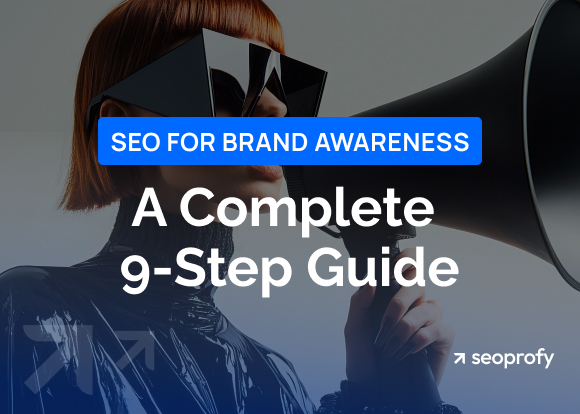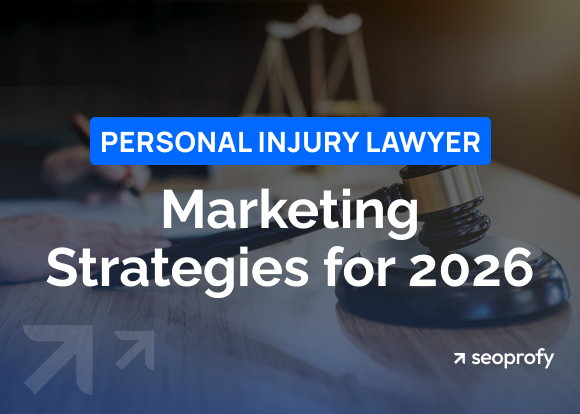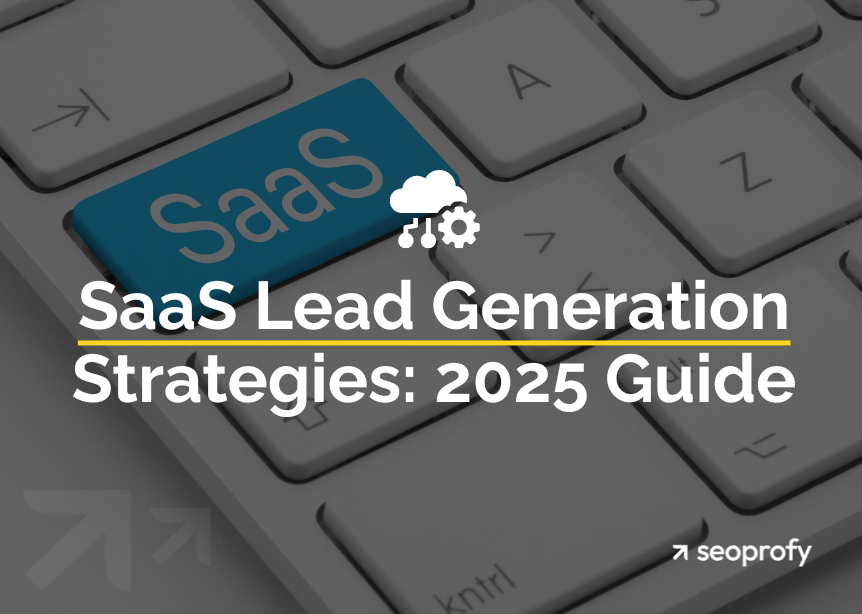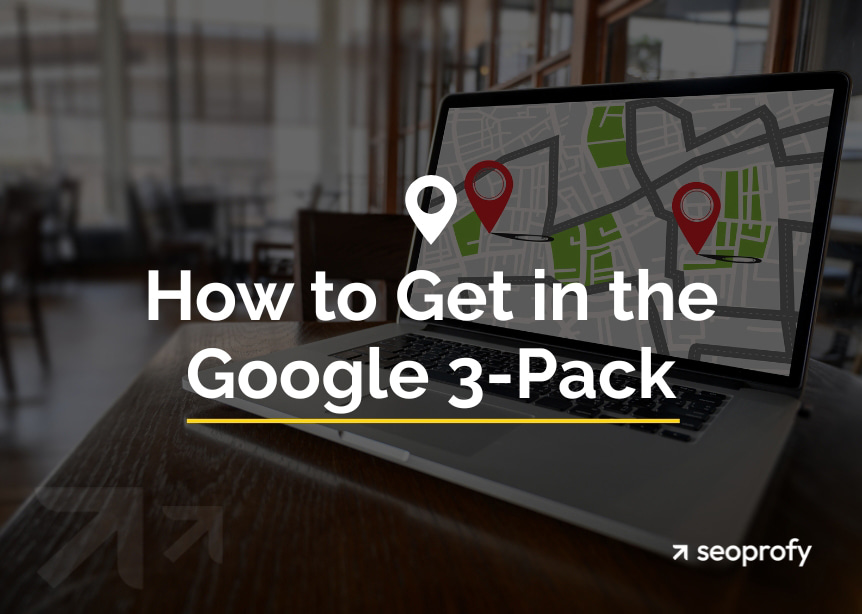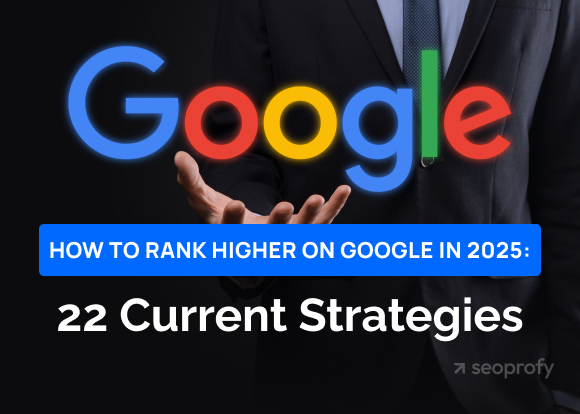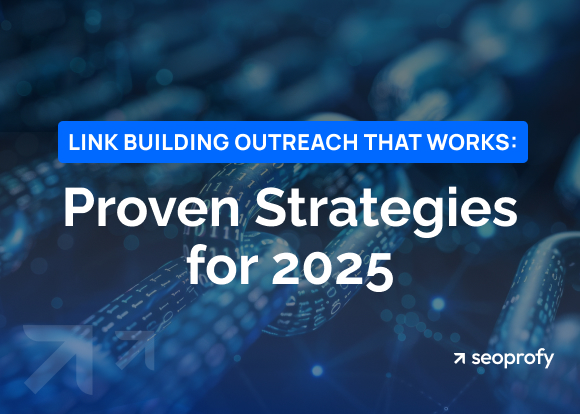We all know search engine optimization helps attract more visitors to a website. But there are also specific ways to use SEO for brand awareness that affect how often people see your business and how they perceive it online.
So today, we’ll explain exactly how SEO supports brand awareness and how the two reinforce each other. You’ll also learn expert tactics and brand visibility tips to help you grow your reach online and, over time, convert that attention into more sales and repeat customers.
- SEO builds familiarity with your brand every time people see your pages in search or AI results.
- Visibility now comes from many places, and omnichannel SEO helps you stay present in all of them.
- A consistent tone and brand messaging across your pages helps people recognize you faster and keeps your SEO efforts more consistent.
- Showing up for non-branded searches puts your company in front of new audiences early in their research.
- The most popular metrics to measure brand awareness for SEO are direct search traffic, share of voice, branded keyword rankings, and mentions across the web.
How Does SEO Influence Branding?
SEO helps more people find your website in organic search results during their research. The more potential customers see your name or logo in Google or other search engines, the more familiar your brand becomes, and the better they can connect your website with what you offer.
Let’s say someone is looking for a “productivity tool.” If your pages surface for this term in search results, be it on Google or AI tools, your brand becomes part of their research journey. They might not click or convert immediately, but they’ll recognize your name again later.
That’s where non-branded keywords work best. These are the searches people make early on, before they’ve decided which company to pick. Showing up there helps you enter their awareness long before the buying stage. And if you keep appearing across those searches, recognition builds naturally until trust and eventually sales follow.

How Does Branding Impact SEO?
Now that SEO is going through some of the biggest changes we’ve ever seen, the importance of brand awareness has slowly turned into a quiet force behind better performance. It helps you stand out in a sea of sameness and also sends search engines and AI tools signals that your site deserves to be cited. Google has even hinted at patents that use branded queries as a signal of relevance.
In general, SEO for brand awareness works through many small factors that build on each other:
- Branded searches create recognition loops: As people look for your company by name, algorithms read it as a sign of trust and relevance.
- Familiar names stand out in AI and zero-click results: Even without a visit, appearing across AI overviews keeps your brand in view.
- Awareness spreads your traffic sources: People who already know you will find you through direct visits and branded queries on different platforms.
- Recognition leads to trust and sales: A name your target audience recognizes feels safer to choose, which often turns awareness into branded traffic and conversions.
From what we’ve seen, brand strength now works as the anchor of sustainable SEO. And it appears to matter just as much for AI visibility, too.
9 Steps to Enhance Brand Awareness with SEO

Brand awareness is a long-term effort where every search appearance and mention online reinforces your name in people’s minds. Below, we share nine ways you can use SEO to build consistency.
Step 1: Define Your Brand’s Core Values and Messaging
Your brand story starts with what you stand for and how you express it. These two parts (values and brand messaging) keep your SEO efforts consistent and recognizable.
First, you’ll need to decide on what you want your audience to associate with your name. Please ensure you document it and integrate it consistently throughout all aspects of your communication. Then add that identity to your on-page details and content.
At the same time, keep your tone and phrasing aligned across meta titles, homepage copy, and even structured data like sitelinks or FAQs. When that happens, users start to remember you, and over time, that familiarity turns into trust.
Step 2: Conduct Thorough Keyword Research with Brand Focus
The most effective keywords in SEO for branding are a mix of branded terms, industry topics, product-related phrases, and high-potential non-branded queries that introduce new audiences to what you offer.
You can first collect a broad set of phrases that describe what your brand does. Then expand them with variations. A handy tool you can use for this is Ahrefs’ Keywords Explorer. All you need to do is enter keywords that describe your product or services and click Search.
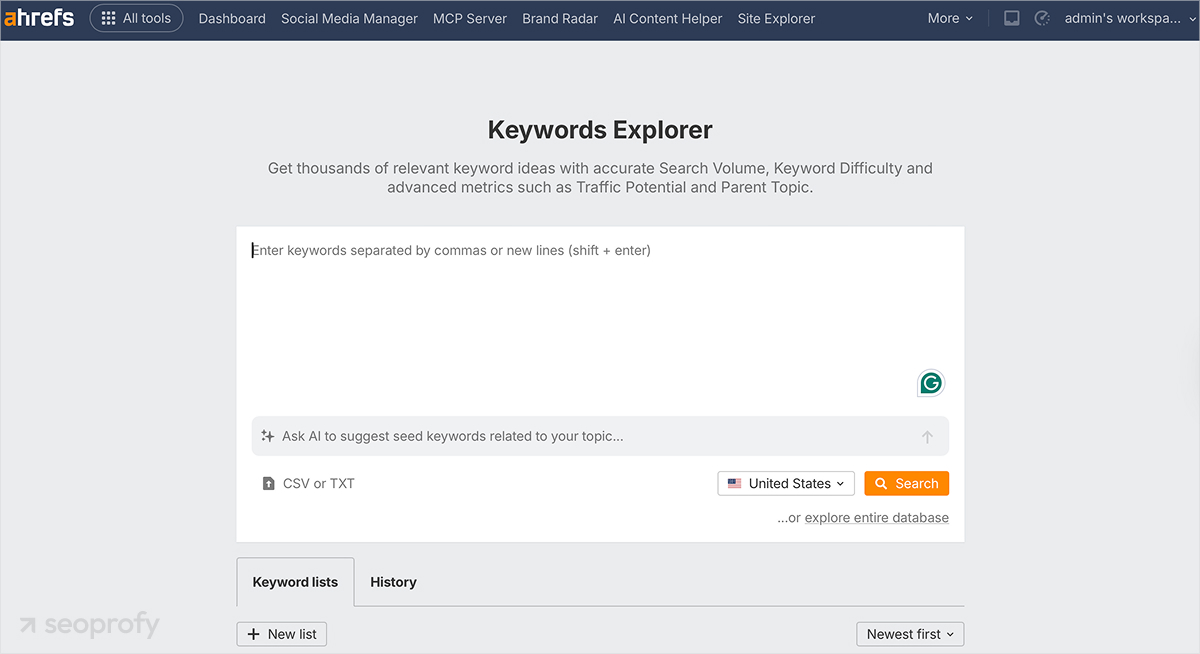
Thereafter, open the Matching Terms report and filter for mid- to low-difficulty keywords (KD up to around 30%). These are the entry points where your brand can appear early in a user’s research.

You can also narrow these terms further and use filters like search volume, intent, “Include,” CPC, and traffic potential to prioritize terms for maximum brand exposure.
Overall, we recommend targeting these types of keywords in your SEO and branding efforts:
- Branded search terms: Direct references to the brand name, products, and main services.
- Unbranded topical keywords: These are high-volume industry queries where the brand can either feature or contribute valuable expertise.
- Long-tail variations: Questions, comparisons, and related phrases your prospects might ask.
- Competitor gaps: Keywords your competitors rank for but your brand doesn’t, specifically those with commercial intent.
At the next step, group related terms into clusters for content mapping. Each cluster should represent one topic your brand wants to be known for. For example, a SaaS company might build clusters around team collaboration, async communication tools, or work productivity platforms. Within each, you can identify subtopics that match your features or values — these are your long-tail targets.
Step 3: Create High-Quality, Brand-Consistent Content
Now that you have keywords and have chosen the clusters for your brand awareness strategy, it’s time to turn them into high-quality content. As you work on your drafts, weave your primary and secondary phrases into the meta titles, headings, subheadings, and the rest of the text naturally.
A few tools that can be helpful here are Surfer and Ahrefs’ Content Editor. They show the overall optimization score of your texts in comparison to top-ranking pages and also suggest relevant keywords you can use to cover the topic fully.
In the process of your content creation, keep the following best practices in mind:
- Write for your audience first: Think about what they want to know or solve, then answer those questions in your content.
- Share valuable resources or hands-on experience whenever you can: Google and AI models both look for usefulness and perspective.
- Update existing pages regularly: It’s easier to refresh something that already ranks than to start from scratch.
As you publish more of these pages, your brand will slowly build more topical authority and SEO awareness. And in the long run, you’ll see it reflected in better rankings and more traffic.
Step 4: Implement Omnichannel SEO to Increase Brand Recognition
Google isn’t the only place where people discover brands anymore. Some learn about you from a podcast mention, others through LinkedIn, or while scrolling a community thread that happens to quote your post. And even though search still matters, awareness now grows from many touchpoints scattered across different spaces.
Rand Fishkin summed it up well in one of his recent posts. He said modern SEO feels different from what we knew a decade ago. The work now depends more on creativity and finding new ways to get mentioned in the right places.
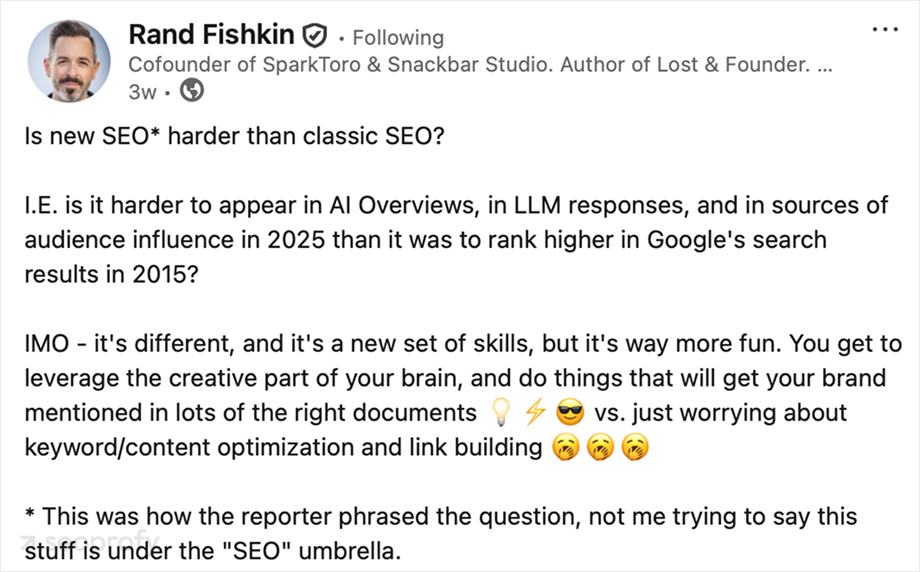
That mindset fits perfectly with omnichannel SEO. The goal is to spread visibility across channels your target audience already uses without losing your brand’s thread. You can do that by:
- Sharing your insights in social media posts
- Collaborating on relevant podcasts that your audience listens to
- Keeping your own channels active, like a newsletter or community
Each of these touchpoints adds to the next, and together they keep your name in circulation. As people start to see you from different directions, brand recognition through SEO grows naturally.
Step 5: Optimize for AI and Large Language Models (LLMs)
The next layer of SEO for brand awareness comes from AI systems themselves. People now use ChatGPT, Perplexity, and Copilot for all sorts of things, including researching services or products they want to buy. Therefore, these tools now also define how people learn and talk about your brand.
The idea here isn’t to “optimize for AI” in the SEO sense. It’s more about feeding these systems with the right signals so your brand can rank in AI overviews and appear in tools like ChatGPT or Perplexity. There are a few ways to do that:
- Get cited in trusted sources: Mentions in blogs, news sites, Reddit threads, research papers, and high-authority publications make your brand visible to LLMs as part of the web’s knowledge graph.
- Publish original data and actionable insights: AI systems look for unique information when summarizing answers. References to studies, surveys, and firsthand experiences are more likely to occur.
- Use consistent branding in structured data: Please ensure that author names and entities are marked up correctly to help crawlers associate your content with the same brand identity.
- Keep your content accessible: Don’t block AI bots unless you have a clear reason. Each crawl builds familiarity between your site and the models that feed future answers.
Our final tip here would be to optimize for conversational searches and give an answer right after a heading. People who use AI tools rarely type keywords like in Google. They use longer, more natural phrases. AnswerThePublic can be a good source to look for those and include them in your branding and SEO strategy.
Step 6: Technical SEO for Optimal Brand Visibility Online
All your branding and marketing efforts can only work if your site functions well on a technical level. Although it involves many areas that are usually reviewed during an SEO audit, here are a few you’ll need to prioritize:
- Page speed: Keep your load time quick (around three seconds is a satisfactory mark). Compress large images and remove scripts you no longer use.
- Mobile layout: More than 62% of global website traffic comes from smartphones now. Check how your pages look and feel on smaller screens and whether buttons or text need changes.
- Crawl paths and indexing: Review your XML sitemap and robots.txt from time to time. It helps you understand if crawlers and AI tools access your main pages without running into dead ends.
Remember that a technically sound site supports every other part of your brand awareness strategies. It keeps your users engaged, and your pages are accessible and visible on search engine results pages.
Step 7: Build Backlinks for Brand Authority
High-quality backlinks have always been important for SEO brand marketing, and from what we see at SeoProfy, it’s not going to change any time soon. For traditional search engines, these act as votes of confidence, and for AI tools, brand mentions send trust signals that your website is worth citing in their responses.
The best and quickest way to find quality link opportunities is to do a competitive analysis. If you’re using Ahrefs, go to their Link Intersect feature and add your domain as well as your competitor’s.
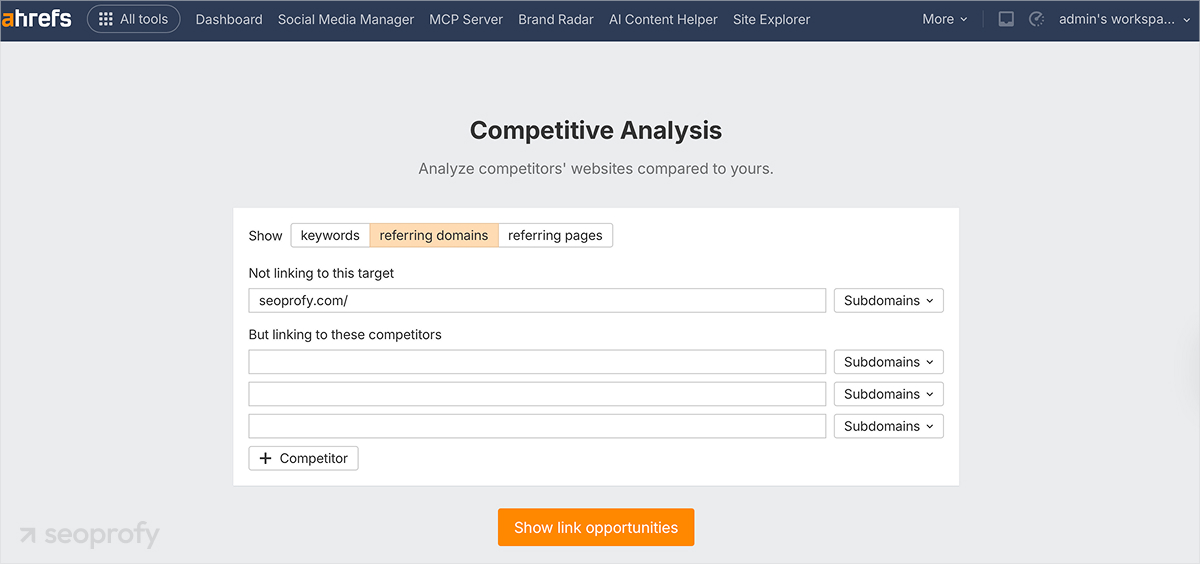
You’ll see which websites link to them but haven’t linked to you yet. That’s a starting point for your link building strategy. You can open a few of those referring pages to see how your competitors are mentioned and try to earn a backlink from them as well.
To increase your chances of securing a link, pitch them a piece of content that’s highly valuable for their audience and can’t be found anywhere else (aka a skyscraper technique). It could be a research-backed study or a detailed guide with original data.
In case you want to learn even more ways to earn high-quality mentions from authoritative sites, we have an advanced link building guide. There, you’ll find 13 tactics you can try to secure backlinks and attract more organic traffic to your site.
Step 8: Improve User Experience (UX) and On-Page SEO
We already mentioned that SEO and brand awareness campaigns help more people find and visit your site. What happens next depends on how pleasant the experience feels for them once they arrive.
Google measures that experience through a set of metrics called Core Web Vitals, which are also considered minor ranking factors. These numbers show how quickly your pages load and how stable they feel for the visitors.
You can check all of this in PageSpeed Insights or Google Search Console. If you have a low score, look at the diagnostics inside the tools. It shows you personalized suggestions on what to fix to improve it. At the same time, follow these on-page SEO best practices:
- Structure pages for easy reading: Visuals, lists, and shorter paragraphs make your content easier to scan. Most readers don’t go line by line — and this layout helps AI systems interpret your website too.
- Use internal linking where relevant: Internal links pass SEO value to your other pages and help readers find related content. This enhances overall navigation and helps them stay on your site longer.
- Optimize meta tags and images: These elements help search engines understand the context of your pages and whether to show them in search results. Make sure to include your target branded search terms naturally for better relevance.
Step 9: Use Local SEO to Improve Brand Awareness in Your Market
This step will be most helpful for local businesses that operate in a certain area. People nearby often look for solutions with a geographic search intent, so optimizing for local SEO can build brand recognition within that specific area. Here’s a brief overview of what to do:
- Optimize your Google Business Profile with all the possible details and relevant photos.
- Add local service pages to your content plan that target location-based terms.
- Build local backlinks to expand your reach and build authority in that market.
- Encourage positive reviews as part of your reputation management.
Of course, this is more of a general overview, and if you’re looking for detailed local brand awareness strategies, you can check out our comprehensive guide to local SEO.
How to Measure the Impact of SEO on Brand Awareness
You now know all the best brand awareness techniques you can try in your SEO campaigns. The final step? The next step is to monitor the practical results of these efforts.
Tools for SEO Branding
Depending on your initial goals, here are some of the most helpful industry staples and AI SEO tools you can use for measuring brand awareness.
|
Tool |
Price |
Expertise Level |
Main Features & Uses |
| Google Search Console | Free | Low | Shows branded and non-branded queries, impressions, and CTR trends; useful for tracking how your visibility changes across search results. |
| Google Analytics 4 | Free | Medium | Helps identify direct traffic growth, returning users, and engagement from different channels. Combine this data with Search Console for a full picture. |
| Ahrefs | From $119 / month | Medium–High | Great for tracking backlinks, branded search traffic, keyword rankings, and AI mentions. Use Link Intersect and Content Gap for competitive insights. |
| SearchAnalytics.ai | Custom plan | Medium | Provides advanced query clustering, competitor analysis, and over 300 SEO metrics with AI-powered analysis. |
| LinkChecker.PRO | From $25 / month | Medium | Monitors backlink growth, checks link health, and identifies lost or broken links that could affect brand authority. |
| Brand24 | From $149 / month | Low–Medium | Tracks brand mentions across news, blogs, and social media. Helps measure visibility outside of Google and AI surfaces. |
| AlsoAsked / AnswerThePublic | Freemium | Low | Useful for checking new branded and unbranded search queries that show how people talk about your products or services. |
Make SEO Your Brand-Building Strategy with SeoProfy
People now find brands across different platforms, and AI tools are slowly taking a bigger share in that process. What SEO does is connect all those touchpoints and make your name appear where prospects are already searching. To make the most out of it, it’s worth your while to partner with a professional SEO agency, especially when:
- Your team doesn’t yet have SEO expertise
- Your current efforts aren’t producing the traffic, leads, or brand lift you expect
- You want a strategy that’s tied to your bigger brand goals
That’s what we do at SeoProfy. Our team studies how people find brands in your niche and builds a personalized strategy that grows your brand’s reputation step by step. What sets us apart?
- Custom, ROI-focused SEO strategies
- Full transparency and regular reports
- In-house tools for deep audits
If you’re ready to see better results from your branding and SEO campaigns, our expert team can take you there, from strategy to execution, with real accountability along the way.


